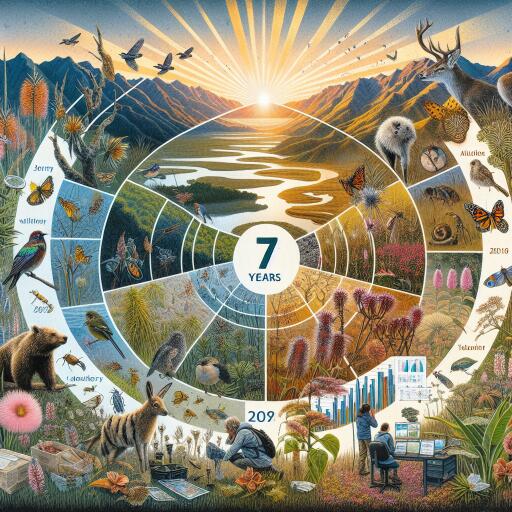
Revitalizing Waimakariri: A Seven-Year Journey Towards a Greener Future
In an ambitious venture to nurture nature, the Waimakariri region has seen a transformative journey unfold over the past seven years. Through the dedicated efforts of the Waimakariri Irrigation biodiversity project, more than 5,000 native seedlings have found a new home across the landscape, marking a significant step towards ecological restoration and conservation.
Initiated in 2018, this groundbreaking project embarked on its mission following the identification of 297 ecological hotspots within a vast 44,000-hectare area under the irrigation scheme. Currently, fourteen restoration initiatives are actively progressing, enhancing the biodiversity along the Cust River, Burgess Stream, Old Eyre, and Hunters Streams, showcasing a targeted approach toward ecosystem revival.
The guiding force behind this project, the biodiversity project lead, shared insights into the vision driving their efforts. Emphasizing the importance of protecting and enhancing areas of ecological significance, the project aims to weave a network of restored habitats that span across the region. This vision is not limited to isolated interventions but extends to fostering connections across the landscape, linking these habitats to form a continuous ecological corridor. Such connectivity is vital, offering pathways for native fauna and contributing to the broader mission of biodiversity enhancement.
This vision of interconnected ecological restoration goes beyond the immediate scope of the irrigation scheme, with an outlook that spans 30 to 40 years into the future. A commendable aspect of this initiative has been its outreach and involvement with the local community, including schools, aiming to integrate conservation efforts with education and community engagement. Over time, this initiative plans to expand its collaboration with various organizations and the broader community, promoting a collective effort toward environmental stewardship.
The methodology behind the project combines traditional conservation techniques with modern technology. The use of drones and mapping software has revolutionized data collection and monitoring, offering precise insights into the condition of each site and facilitating strategic planning for planting and restoration efforts. This technological approach not only enhances efficiency but also ensures that restoration activities harmonize with existing farm infrastructure, illustrating a fine balance between agricultural productivity and ecological conservation.
The intrinsic value of biodiversity and ecosystem services is well recognized, not only as a regulatory obligation but as a moral and community responsibility. The project leaders convey a strong sense of duty toward contributing to the well-being of the environment and the community. By adopting a catchment-wide perspective, they underscore their commitment to fostering biodiversity, not just within their operational boundaries but extending benefits downstream, ultimately aiming for a landscape where nature thrives in harmony with human activities.
As this project moves forward, it embodies the hopes and aspirations of a community dedicated to preserving and enhancing the natural beauty and ecological integrity of the Waimakariri region. It stands as a testament to what can be achieved when conservation meets innovation, driving positive change for the environment and future generations.
The journey of the Waimakariri biodiversity project is more than just planting trees; it’s about planting the seeds of a sustainable future, where every effort counts towards a greener, more resilient ecosystem. It heralds a new era of environmental stewardship, where the collective actions of today pave the way for the flourishing landscapes of tomorrow.





Leave a Reply